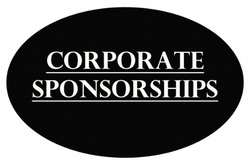
In order to further their own missions and provide the opportunity for additional non-dues revenue to carry out their educational, charitable, professional and other tax-exempt purposes, many organizations seek corporate sponsorships. A sponsorship is not just about increasing revenue, but must be consistent with the organization's mission and vision, while adding value their constituents or members. Companies are no longer turning to exhibiting and sponsorship merely for exposure. They want new or expanded ways to interact directly with people who can purchase their products or services. Increasingly, sponsors are looking for focused meeting opportunities with industry leaders through their partnerships as they develop business plans going forward.
The maintenance of public trust and integrity, ethical standards, and credibility are of paramount importance and should be protected with the utmost vigilance. It is important for organizations to be cognizant of the rules and regulations regarding corporate sponsorships and follow the constraints within their field.
Definition of Corporate Sponsorship
Corporate sponsorship is financial or in-kind financial support by a commercial interest, given to an association or other not-for-profit organization. There are a number of reasons companies provide sponsorship including increasing brand loyalty, creating awareness and visibility, positioning the company as an industry leader, and networking with potential and existing clients. Sponsorship is distinguishable from a charitable contribution in that a corporate sponsor is typically motivated by a desire to receive a public acknowledgment in exchange for its support of an event or program on a single occasion, or over a period of time. Ongoing sponsorship may be dedicated to a particular ongoing activity or may be provided as general underwriting of all activities.
In my opinion, now more than ever non-profits and associations are in a unique position to facilitate opportunities that help the sponsor and build relationships with industry as well as generate new partnership opportunities.
Agreements
All potential and current sponsorships should be based on a written agreement between the sponsor and organization. Agreements generally should include the following:
- Type and extent of support provided by the sponsor
- Event, program or service to be sponsored
- Value of the sponsorship to be provided by the sponsor and a payment schedule
- Nature and value of the benefits to be provided by theorganization
- Term and termination conditions
- Provisions addressing liability, insurance, dispute resolution and similar matters



 RSS Feed
RSS Feed
